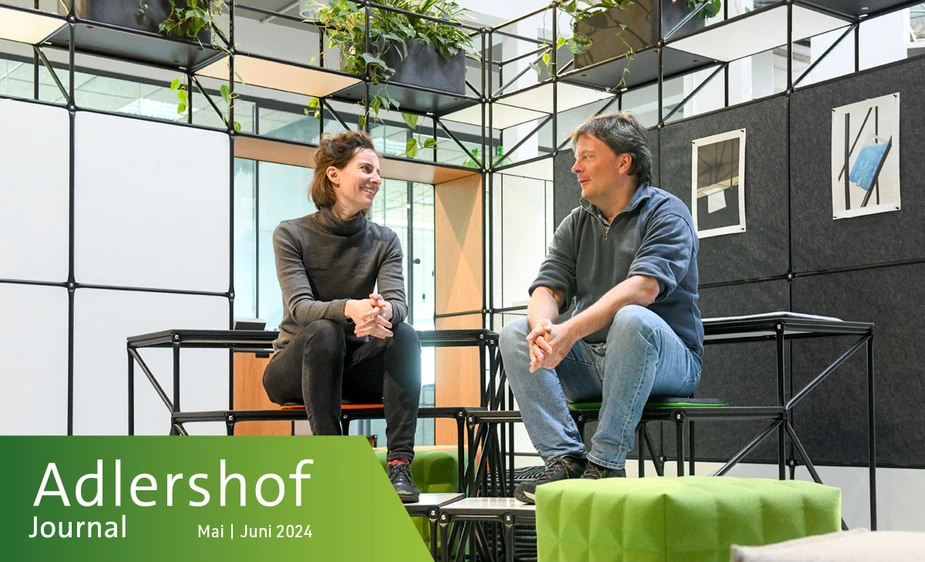Agile furnishing
System 180 provides people with flexible spatial design
The pandemic has triggered a surge in flexibility in the professional world. The demands to spaces and furniture are changing. When hybrid work and agile methods bring together diverse teams, it is essential to have adaptable spatial design and furniture that maintain sustainability while meeting changing requirements. Anyone seeking out these requirements will sooner or later stumble upon the modular System 180.
“Production, development, and sales go hand in hand in our expansive warehouse,” says Elisabeth Helldorff. She is responsible for sales, marketing, innovation, and business transformation at System 180 GmbH in Adlershof. A native of Austria, she was originally a musician and holds a PhD in cultural studies. She is a typical representative of the fundamental changes in the professional world. Borders are shifting. Rigid job profiles are becoming permeable, since increasingly agile processes require new skills: communication and teamwork, creative application of methodological knowledge, intrinsic motivation, and high flexibility.
At the latest since the pandemic, agile—and often hybrid—work in changing teams is commonplace. With the increasing digitalisation and the advent of artificial intelligence, innovation cycles are accelerating. In this volatile world, entrenched processes, well-trodden paths, and rigid spatial design are becoming obsolete. Instead, it's all about being responsive, vigilant, and resilient. The order of the day is to break up work and team processes. Like modern music is sampling old hits, technological innovation is increasingly the result of rethinking and combining existing technology. To do so, changing teams must be put together for projects based on their respective skills. “In the interest of creativity and efficiency, they should work together in the same room at least some of the time,” says Helldorff. After all, humans are physical beings with highly developed senses. “It's a misconception that we work equally well if we only use a small part of these senses during digital meetings,” she says.
But how must spaces and furniture be designed to do justice to the new processes in changing teams? Helldorff’s introductory phrasing of “production, development, and sales work hand in hand” offers a hot lead. Something is missing from the list: How can a provider of furniture and spatial design work without a design department? This question leads us to the core of System 180. Conceived by the architect and exhibition organiser Jürg Steiner, it is a fully modular furniture system. The number 180 refers to its smallest unit: 180 x 180 mm. The whole world can be captured in it. Double it to 360 mm and you can fit a folder inside. Quadruple it to 720 mm and you get the height of a table. One step above at 900 mm, you attach handrails to it. It also works for stairs. The company produces pipes in four thicknesses between 20 mm and 60 mm for furniture, stairs, facades, for temporary set-ups in museums and for events all over the world. With their flattened ends attached to steel nodes, these steel tubes are the recurring theme that allow for endless new compositions in creating shelves, tables, beds—or any other required furniture—in combination with panels made of different materials.
“We don’t have a design department because new developments are created together with our customers. Their needs and creativity lead us to new responses to space requirements that can be combined using the modules of System 180,” says Helldorff. Desks and bar tables, wardrobes, whiteboards—even a basketball hoop. Anything goes. Without waste. The modular steel frames are reusable. Most of the plates are too. They are delivered—whenever possible—with blankets that can be used again and again. The Adlershof company is taking part in a government-funded research project to support the development of recycled wood-based materials and bio-based glue. Durability and recyclability are fundamental aspects of the system, along with its flexibility and an uncompromising focus on customer requirements. And so, System 180 has been working on concepts for the future of work since its beginnings in 1981. Yet, their significance in today's world is greater than ever before.
Peter Trechow for Adlershof Journal
